
I hate raking, as does everyone I know. It’s hard work, tedious and incredibly frustrating. But, as luck would have it, here’s a little-known tip you can make use of - which means that you don’t actually have to rake. Not only is this a labor-saving trick for you, it’s also very good for your lawn’s vitality.

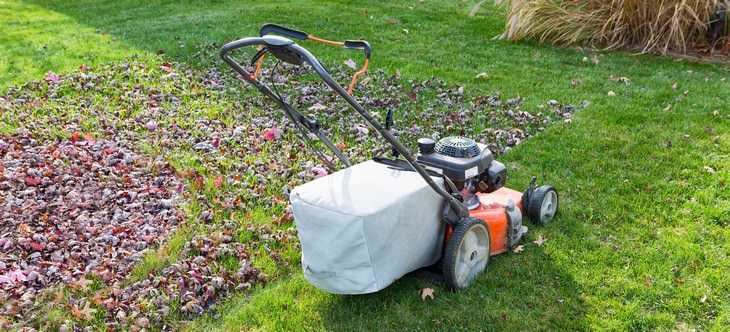

Researchers from the University of Minnesota’s Agriculture Department state that this method works especially well with oak tree leaves. This foliage decomposes very slowly, providing the lawn with stronger and more enduring nitrogen levels. So, if you have an oak tree in your garden, you are particularly fortunate.
However, they also suggest we try this method ONLY if we believe the trees the leaves have fallen from have no leaf diseases, like leaf spot, anthracnose or apple scab. To stop these leaves from re-infecting the roots of the tree you should remove these leaves from your lawn the old-fashioned way.
Hopefully now you won’t have to do anymore raking. So, good luck with your lawns this fall!
H/T: tiphero.com
Images courtesy of Depositphotos.com
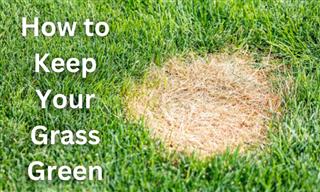
A Guide to Identifying and Treating 8 Common Lawn Problems
Discover 8 common problems in gardens and lawns and how they can be treated

Plant Some Garlic in Your Garden This Fall Season
A quick and easy guide to planting garlic in your garden this fall season.
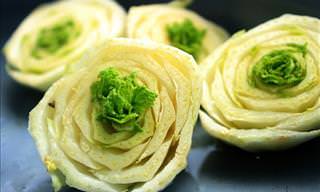
Re-Grow These 10 Vegetables - Just Use Water!
It's amazing how much money you can save by re-growing these 10 favorite vegetables! Follow our tips and instructions to learn more about how you can have a constant supply of your favorite greens, without paying an extra penny.
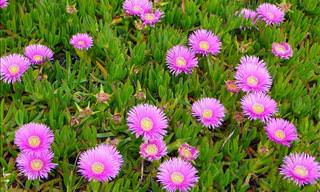
These Flowers Add Color With Very Little Gardening Effort
If you want to have a colorful summer garden but don't fancy dedicating all your free time to it, all you need are these 12 flower varieties. Read on for more.
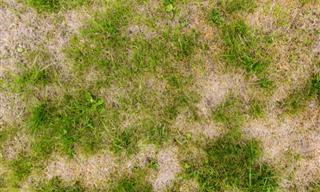
Now is the Time to Revive Your Patchy Lawn
Early fall is the perfect time to cure your dry, heat-beaten lawn. Here's how.
 5:18
5:18
10 Simple Gardening Hacks to Maximize Your Harvest
Gardening is a wonderful pastime, but we could all use an extra hand in the garden. With these 10 tips it'll be like there's two of you getting green fingers.
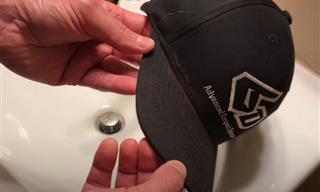 3:52
3:52
How to Best Remove Sweat Stains From Your Hats
Sweat stains can ruin the look of your hats. Here's how to remove them once and for all - quick and easy!

Smart Ways To Do The Dishes More Effectively
These 15 tips will help you keep your kitchen crystal clear and sparkling clean. It also ensures all your dishes have been cleaned in the most hygienic way possible.

9 Subtle Restaurant Tricks That Empty Your Wallet Faster
Restaurants are using these sneaky tricks to make you spend more!
 20:21
20:21
I Wish I'd Known About These Great Life Hacks Sooner
Whether you want to make your own musical instruments or learn how to take your clay modeling skills to the next level, this video has it all!
 11:10
11:10
Prepare To Fall in Love With Quinoa
Quinoa has so much to offer if you only know how to unlock its best features. Let cooking instructor Hellen Rennie tell you how.

13 Unexpected Ways to Use Ziploc Bags Every Day
Here are 13 clever ways to put Ziploc bags to work in your daily life.

Baby Oil Can Do Things You Never Even Considered!
Baby oil is usually used to keep your baby's skin soft, but in the next article, you'll get ideas for six more effective and surprising ways to use it.

Use Your Freezer to Clean These 7 Items of Clothing!
This may sound absurd, but there are actually a lot of benefits to putting your clothes in the freezer, especially when it comes down to certain pieces of clothing in your wardrobe. Check them out here!
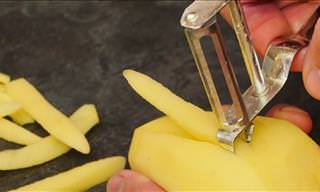 3:25
3:25
You May Not Be Using Your Peeler Properly...
The common kitchen peeler is a lot more versatile than you thought.

What Are Phishing Emails And How Can You Protect Yourself?
Phishing emails are a common method used by cyber criminals to steal people's data. These are 4 frequent scams you can look out for and avoid.

Plant Some Garlic in Your Garden This Fall Season
A quick and easy guide to planting garlic in your garden this fall season.
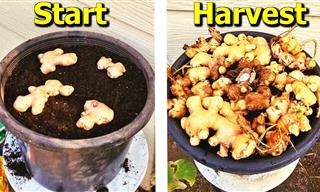 12:24
12:24
Grow Your Own Ginger Indoors With This Easy Hack
Want to grow some ginger at home? It's easier than you think.
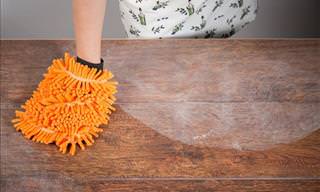
Don't Waste Time Cleaning Kitchen Items! Here's What to Do
Here's a list of the most irritating kitchen items to clean.

Versatile Ingredients You Should Always Have in a Kitchen
The 15 foods we feature on this list are all serious multitaskers, so it's always good to stock up on these!

Here's How to Reuse Your Old Pill Bottles in Creative Ways
There are plenty of things that you can do with a pill bottle after it has been cleaned and sanitized properly, and here are 15 of my favorite ideas.

These 21 Common Household Items Are Toxic to Your Dog
Is there anything in your home or yard that could be poisonous to your dog? Read this list of 21 household items toxic to dogs to find out

These Flowers Add Color With Very Little Gardening Effort
If you want to have a colorful summer garden but don't fancy dedicating all your free time to it, all you need are these 12 flower varieties. Read on for more.

12 Ways You Might Be Damaging Your TV Without Knowing
These mistakes could ruin your TV—avoid them!

Warning: Don't Put These in the Washer or Dryer!
The washing machine and the dryer are two very efficient inventions that help us a lot - but the following 9 items are best kept away from them.
 9:55
9:55
40 Timeless Hacks That All Men Need to Know
If you enjoy DIY and fixing things, you need to see this.
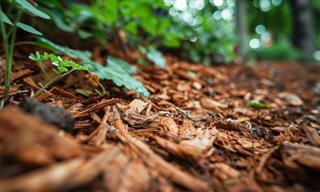
7 Free Fall Mulching Materials That Transform Your Garden
Discover 7 free fall mulching materials that protect plants, suppress weeds, and enrich soil. From leaves to compost, save money while preparing your garden for winter.

With Age Comes Wisdom! Great Advice From People Over 50
Why get advice from a book when you can get great advice from a person over 50?
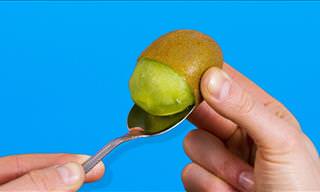 18:57
18:57
A Better Kitchen: 20 Tips You Can't Afford to Miss
How to make your kitchen one of the EASIER rooms in the house? Just check out these 20 tips that'll make your kitchen a much nicer place

Keep Insects Away With a Few All-Natural Bug Repellents
From bed bugs to spiders, these quick homemade bug repellents made from natural ingredients will help you keep them away.

9 Ways of Telling Branded Perfume From a Fake
Do you know how to tell a branded perfume from a fake? Well, you're going to be able to after you read these 9 handy tips.

10 First-Aid Techniques Most of Us Perform Incorrectly
Performing first aid methods wrongly can do more damage than good. Here are 10 common first aid methods that are often performed incorrectly.

If You Wear These Shoes Often, You Are Damaging Your Feet
Wearing these shoes often can damage your feet!

Save Your Dog from Choking with This Emergency Maneuver
What do you do if you see a dog choking? This guide explains all you need to know.

Learn About 4 Types of Bosses and How to Deal With Them
There are tons of books that teach bosses how to be bosses, but now its time for employees to learn how to deal with their bosses!
 4:57
4:57
Bob Proctor: How to Attract the Right people to Your Life
The video provides inspiration and hope for anyone seeking to strengthen their personal connections and create a supportive environment for success and fulfillment.
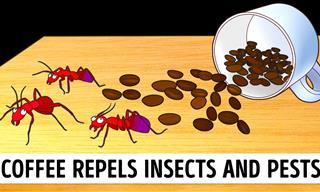 9:41
9:41
8 Natural And Safe Ways to Keep Ants Away From Your House
Take note of these useful natural remedies that can help you keep ants away from your home.

This is How You Keep Your Marriage Strong & Life-Long!
Here are 12 ways you can keep your marriage long-lasting, strong, full of love and support.
 3:01
3:01
Lemons Are So Useful! Did You Have Any Idea?
This video will show you some superb life hacks using lemons to make your life easier.
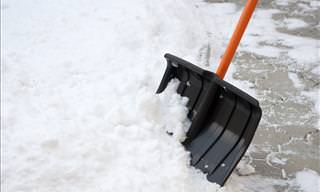 3:54
3:54
Shoveling Snow This Year, Use This Great and Simple Trick
Got a lot of snow to shovel? Here's the easiest and safest way to do so.

The EASIEST Plants to Grow in Containers
If you’re wondering which plants work best in container gardens, you’ve come to the right place.
 3:00
3:00
You've Been Tying Shoelaces Incorrectly Your Whole Life!
Although you're led to believe that you know how to tie your shoelaces perfectly well, You actually don't. Watch this TED Talk to see why.
 3:11
3:11
Misplaced Your Spectacles? How to See Without Them
We all forget spectacles on occasion, and regretably they sometimes break too. If you're caught in this situation the following tip will show you how to see.

Got a Flat Tire? Here Are the Dos & Don'ts of Changing It
This infograph will teach you what to do and what not to do when it comes to changing your car's tire.

How to Use Essential Oils Without An Expensive Diffuser!
Do you love essential oils, but you’re not ready to spend a lot of money on them or a diffuser? This article will help!

How to Keep Your Cat From Keeping You Up at Night
This infographic breaks down why cats keep you up at night, what their sleep patterns really look like, and practical ways to manage the problem without losing your cool.

Do NOT Store These Fruit and Veg Together!
What are the best ways to store fresh fruit and vegetables? This guide explains.
To enable your Ad-Free Subscription, please fill the fields below
Your subscription was successful, now you can enjoy an ad-free experience!! Note: To make sure you get no ads, please make sure to log in to your account. If you are logged in already, then refresh the page. The subscription can be cancelled at any time.


